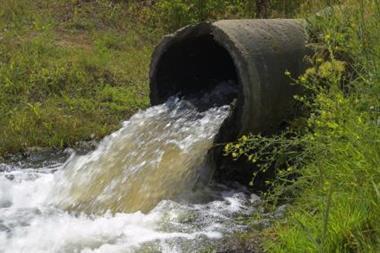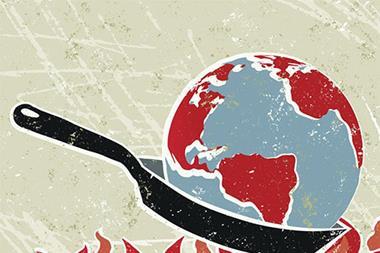Persistent organic pollutants, or POPs, as they are usually called, are some of the most dangerous pollutants released by human activity. They are primarily products of human industry, and stem from everything from dry cleaners to incinerators. They are highly toxic, and have an array of adverse effects, notably disease and birth defects in humans and animals. Specific effects can include reproductive failure, abnormal thyroid function and other hormone dysfunctions, feminisation of males and masculinisation of females, damaged immune systems, behavioural abnormalities, tumours, cancers and gross birth defects.
Early in the last century, POPs were virtually non-existent in the environment. Their production expanded dramatically following World War II. Today, ecosystems in most regions of the world are contaminated and some wildlife everywhere will be carrying body burdens of POPs at levels known to cause harm. Many humans also will have POPs in their bodies at levels which could result in adverse health impacts.
Karen Perry, a POPs campaigner and member of the US organisation 'Physicians for Social Responsibility,' explains: "A human generation is in the order of 20 to 30 years, so evidence of human injury from POPs is comparatively slow to emerge. It is only recently that we could put together a body of evidence documenting human injury from POPs."
Dangerous exposure
POPs are highly stable compounds which can last for decades before breaking down. They circulate globally through a process known as the 'grasshopper effect'. Released in one part of the world, they can be transported through the atmosphere to regions far from their source, through a repeated, process of evaporation and deposit.
POPs also concentrate in living organisms through the process of bioaccumulation. Though not soluble in water, POPs are readily absorbed in fatty tissue, where concentrations can reach up to 70,000 times the background levels. Fish, predatory birds, and mammals high up the food chain absorb the greatest concentrations. When they travel, the POPs travel with them.
As a result of these two processes, POPs can be found in people and animals living in regions such as the Arctic, thousands of miles from any major source of the pollutants.
According to the United Nations Environment Programme (UNEP), POPs have the potential to injure humans and other organisms even at the very low concentrations at which they are found. Extraordinarily small amounts of certain POPs can disrupt biological functions, including the activity of hormones and other chemical messengers, triggering a cascade of potentially harmful effects.
Concern over POPs dates from the late 1960s, when scientists and researchers began compiling evidence of injury to fish, birds and mammals in or around the Great Lakes of North America. In some cases, the predominant POPs sources were relatively near; in others, they were thousands of miles away.
Alarmed scientists then investigated similar injuries to humans. In the years that followed, reliable evidence was gathered associating human exposure to specific POPs or classes of POPs with cancers and tumours at multiple sites, neuro-behavioural impairment including learning disorders, reduced performance on standard tests and changes in temperament, immune system changes, reproductive deficits and sex-linked disorders, a shortened period of lactation in nursing mothers, and diseases such as endometriosis (a painful, chronic gynaecological disorder in which uterine tissues grow outside the uterus), increased incidence of diabetes, and others.
Of particular concern is evidence suggesting that women, infants, and children are especially vulnerable to certain effects of POPs. The injury caused by exposure is often expressed, not in the adult population, but in the younger generation. Maternal body burdens of POPs are transferred through the placenta to the developing foetus and through breast milk to the nursing infant, and can cause injury at vulnerable stages of development.
People are generally exposed to POPs through their food supply, although communities near POPs sources can be exposed through breathing or skin contact. POPs exposures are often highly pronounced in peoples whose diets include large amounts of wild food, and especially of big fish or marine mammals.
The dirty dozen
That is the bad news. The good news is that world governments have realised something must be done. In May 2001, over 100 countries signed the Stockholm Convention, which sets out control measures covering the production, import, export, disposal, and use of POPs. Even the US – which refused to join international treaties designed to combat climate change – signed the Convention, testament to the severity of the issue.
Governments agreed to promote the best available technologies and practices for replacing existing POPs, while preventing the development of new POPs. They will draw up national legislation and develop action plans for carrying out their commitments.
While the control measures will apply to an initial list of 12 chemicals, the so-called 'dirty dozen', a POPs Review Committee will consider additional candidates for the list on a regular basis. This will ensure that the treaty remains dynamic and responsive to new scientific findings.
Most of the dirty dozen are subject to an immediate ban. They include eight pesticides, aldrin, chlordane, DDT, dieldrin, endrin, heptachlor, mirex and toxaphene, two industrial chemicals: polychlorinated biphenols (PCBs) and hexachlorobenzene, and two by-products: dioxins and furans.
There is a health-related exemption for DDT, which is still needed in many countries to control malarial mosquitoes. This will allow governments to protect their citizens from malaria, until they are able to replace DDT with cost-effective and environmentally friendly alternatives.
Similarly, in the case of PCBs, which have been widely used in electrical transformers and other equipment, governments may maintain existing equipment until 2025, to give them time to arrange for PCB-free replacements. Although PCBs are no longer produced, hundreds of thousands of tons are still in use.
Governments also agreed to reduce releases of furans and dioxins, which, being accidental by-products, are more difficult to control. The goal is to minimise and, where feasible, eliminate their release.
Eliminate, not manage
Anti-POPs campaigners, such as the International POPs Elimination Network (IPEN), have, on the whole, been happy with the responses to the issue and are willing to be understanding for a little while longer.
IPEN says: 'We recognise that the elimination of all significant POPs sources and the remediation of POPs environmental reservoirs will, in many cases, be difficult and take time. We also recognise that POPs will remain in the environment and in the food chain for an extended period, even after global elimination measures have been effectively implemented. For this reason, POPs management regimes will be required on an interim basis, while the longer-term phase-out regimes are put in place and take effect. POPs management, however, should be viewed as a supplement to POPs elimination and not as an alternative.'
The extremely dangerous nature of the chemicals means that risk management can only go so far. 'The goal of a global POPs convention must not be defined as the better management of risks associated with POPs. POPs do not just represent a risk. They are a source of significant injury to the biosphere. Nor is the better management of POPs an appropriate goal, as POPs, by their very nature, are unmanageable substances.'
There are alternatives to most POPs, but the problem is that high costs, lack of public awareness, and the absence of appropriate infrastructure or technology prevent their adoption. Solutions must be tailored to the properties of each chemical, as well as to each country's climatic and socio-economic conditions.
Help is at hand. UNEP has established an information exchange where concerned parties can speak to POPs experts, gain information on alternatives and get advice on how to phase out and replace them.
Ultimately, however, only elimination will suffice. Cancer, brain damage and reproductive dysfunction are the stuff that many a big lawsuit is made of. The cost of not doing away with POPs will certainly eclipse the cost of adapting to new techniques.
CHEMICALS SAFETY
In an appendix to his report to the UK Health and Safety Executive, Health and Safety Indicators for Institutional Investors, Mark Mansley of Claros Consulting suggests strategies for ensuring safer chemicals.
The report says that industries involved in making and using chemicals are in an increasingly vulnerable position. 'Thousands of man-made chemicals have been released into the environment in vast quantities since the boom of the chemical industry in the 1950s. This has brought many, often unforeseeable, problems for the environment and health risks to animal and human life. Many of the risks and consequences are still not well understood. Responsible companies, in both retail and manufacturing sectors, should be taking active steps to reduce of the use of toxins that present the potentially greatest risks. These include ozone depleting chemicals, endocrine disrupting chemicals, persistent organic chemicals, and PVC. An ability to deal rapidly with developments in science, the increase in public awareness and requirements for protection are needed to avoid damage to corporate reputations and brands.'
Indicators of responsible practice for companies involved in the production of chemical products are given below:
The chemical industry
The consumer product and retail industry
Claros is an independent consulting practice specialising in sustainable and responsible investment.
International Treaty
The UN treaty designed to reduce and, ultimately, eliminate POPs is the first global document intended to entirely eliminate a set of chemicals due to their hazard to human health. Another ground-breaking aspect of the treaty, says US law firm Quarles & Brady, is its adoption of a so-called 'precautionary principle.' The treaty specifies that when there is scientific uncertainty about whether to add a chemical to the list of banned substances , the treaty administrators 'shall decide, in a precautionary manner, whether to list the chemical.' Similarly, when countries select the best available technology to control POPs, 'consideration of precaution and prevention' should be given 'special consideration while bearing in mind the likely costs and benefits.'
Jessica McCallin is a freelance journalist



















